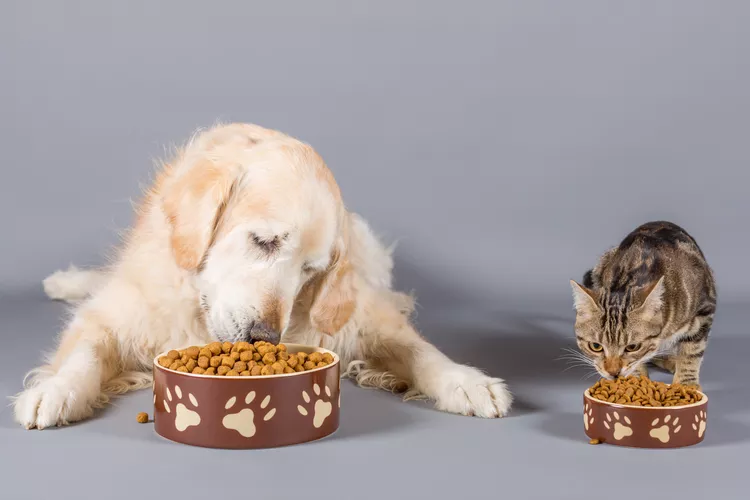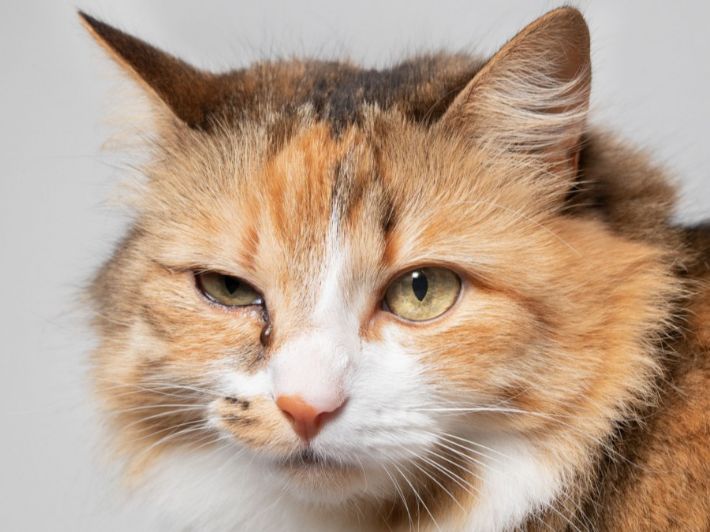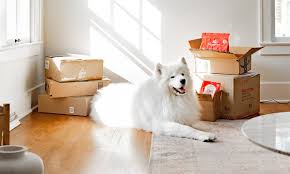The Healthy Life of Pets: Appropriate Food Quantities for Type and Size
Proper nutrition is one of the crucial aspects of pet care, significantly contributing to their health and happiness. Determining the appropriate quantities of food based on the type and size of the animal poses a significant challenge for pet owners, requiring them to understand the specific needs of their pets and adjust a diet that meets those requirements
Figuring Out What Your Pet Needs to Eat:
Before determining the amount of food, pet owners should understand the specific needs of their animal’s breed. The nutritional requirements differ between dogs and cats, and each type of pet requires a specific dietary composition that meets its health needs. Now, let’s continue with the context
Determining Breed-Specific Needs
Before determining the amount of food, pet owners should understand the specific dietary needs of their animal’s breed. Each type of pet has unique nutritional requirements that reflect its health and nutritional needs.
Dogs
– Such as high protein requirements, as protein is essential for muscle growth and overall health.
– Dogs also need adequate amounts of healthy fats and carbohydrates to maintain energy.
cats:
– Cats are carnivorous animals, so their food should contain high levels of protein. Their diet should include a variety of both dry and wet food, and it’s important to diversify between them.
– Vitamins and minerals such as vitamin A and calcium are essential for good health.
Ornamental Birds:
– A healthy diet for ornamental birds depends on the type of bird and its specific needs.
– Some birds require various seeds, while parrots, for example, need vegetables and fruits.
For Rabbits and Hamsters:
– These animals need diversity in vegetables, fruits, and grains.
– Dietary fiber is essential for intestinal health and should be present in their food.
Supplements and Vitamins:
– Some animals may need additional supplements, such as Omega-3 oils, to enhance skin and coat health.
– Added vitamins can be essential to fill any nutritional gaps in the diet.
Effects of Individual Factors:
– Adjustments to the food quantities should be made according to the individual’s needs, considering size, weight, and level of physical activity.
Determining breed-specific needs is a fundamental step in achieving proper nutrition for pets, ensuring the fulfillment of their unique nutritional requirements and guaranteeing their health and happiness.
Factors Influencing Food Quantity:
The size, weight, and type of animal
– Larger animals may require larger quantities of food.
– Smaller animals need less, but their food should be nutritionally rich.
:strip_icc():format(webp)/how-much-canned-food-to-feed-554404-Final-4e9268619c4847eaac29498a6a17d88c.png)
https://www.thesprucepets.com/how-much-canned-food-to-feed-554404
The number of times big cats eat daily.
When cats reach one year old, you can determine the number of times they are fed to once or twice daily. It’s advisable to feed your adult cat at the exact same time every day. If you choose to feed your cat twice a day, we recommend providing food once in the morning and once in the evening to maintain digestive health. You can also establish a consistent daily feeding schedule, which helps you observe any inconsistencies that may indicate a health issue for the cat.
The number of times kittens eat – age two months.
In the fifth week, at the beginning of the second month of a cat’s life, the amount of
food consumed in one meal starts to increase. As a result, the cat eats less frequently in a single day, and you should begin providing a bowl of milk for it to drink. At this age, the cat should be nursing only three times a day. By the end of the second month, the food should transition from liquid to wet food that can be chewed, using less water with canned food, available in our store for the best comprehensive nutrition for your little cat.
By six weeks of age, the cat should start consuming wet food with broth and porridge four times a day, reducing the number of nursing sessions, increasing water intake,
and gradually introducing dry food into its diet. However, once the cat reaches two months and surpasses them, it should eat regular cat food twice a day.
The number of times small kittens eat – age one month
Certainly, just like young children, kittens undergo significant growth in their first year of life. The frequency of a cat’s meals and the type of food directly impact its growth rate and development. Therefore, it is essential to establish a proper diet for the cat from its first month to ensure it receives adequate nutrition and monitor its growth.
At birth, a kitten usually weighs between 85 grams to 105 grams, but its weight increases rapidly due to nursing. In the first few weeks after birth, the kitten relies entirely on its mother’s milk without human intervention. However, some kittens may need to be bottle-fed in certain cases, such as the absence or illness of the mother or the refusal of the kittens to nurse.
Thus, kittens aged one month need 45 minutes of continuous nursing every two to three hours in the first week, while the rest of the time they are asleep. Their weight will naturally increase every week until they can stand by the end of the fourth week and engage in play and interaction with others.
Dogs
https://www.thesprucepets.com/puppy-food-feeding-schedule-2804779
:strip_icc():format(webp)/Puppy-food-feeding-schedule-2804779-V4-d4ac3bd2b6764f9ebad94f3707561d70.png)
The amount you feed depends on your puppy’s age and the type of food you offer. Directions on the food package are only a starting guideline, so be ready to adjust the amount up or down if your baby is still hungry, or leaves food behind.
Feeding Guidelines for Growing Puppies
Young puppies experience rapid growth and therefore require more food per pound compared to older puppies. Around the age of 3 months, your puppy will start needing slightly less food, and it’s important not to overfeed. By this stage, your puppy should be losing the rounded belly, and if it’s still a bit pudgy, consider reducing the portions until the excess weight is gone.
Between 6 to 12 months of age, you may choose to spay or neuter your dog, which can lead to a slight decrease in their daily calorie requirements. This period also
marks the potential transition from high-calorie puppy food to adult maintenance food, but the timing varies depending on the breed. Smaller breeds may switch around 7 to 9 months, while larger breeds often continue with puppy food until 12 to 14 months. Adjusting the diet according to your puppy’s growth and development is crucial for maintaining optimal health.
2. Physical Activity:
– Active animals require more energy, and therefore, their nutritional needs may be higher.
Types Of Pet Food
1. Dry Kibble:
– This is one of the most popular types of pet food for cats and dogs . It is convenient, has a longer shelf life, and helps promote dental health by reducing plaque and tartar. Dry kibble is available for various species and life stages.
2. Canned/Wet Food:
– Canned or wet pet food for cats and dogs is known for its higher moisture content, making it a good option for pets who need additional hydration. It often comes in various flavors and textures, appealing to pickier eaters.
3. Treats and Snacks:
– Treats for cats and dogs are often used for training and as occasional rewards. It’s important to use them in moderation to avoid overfeeding and to choose treats that contribute to the overall diet balance.
When selecting pet food, it’s crucial to consider the individual needs of the animal, including age, size, breed, health conditions, and activity level. Consulting with a veterinarian can help determine the most suitable type of food and ensure a balanced and nutritious diet for your pet.
How to Determine the Appropriate Quantity:
1. Consultation with a Veterinarian
2. Follow the Manufacturer’s Guidelines
3. Monitoring and Adjustment:
– Monitor the animal’s weight and check its health status.
– Adjust food quantities based on changes in size and weight.
In conclusion:
Ultimately, the key lies in establishing a proper balance between quantity and quality in the nutrition of pets. Determining appropriate amounts for the type and size contributes to providing a healthy and active life for animals, fostering a strong bond between them and their owners.




